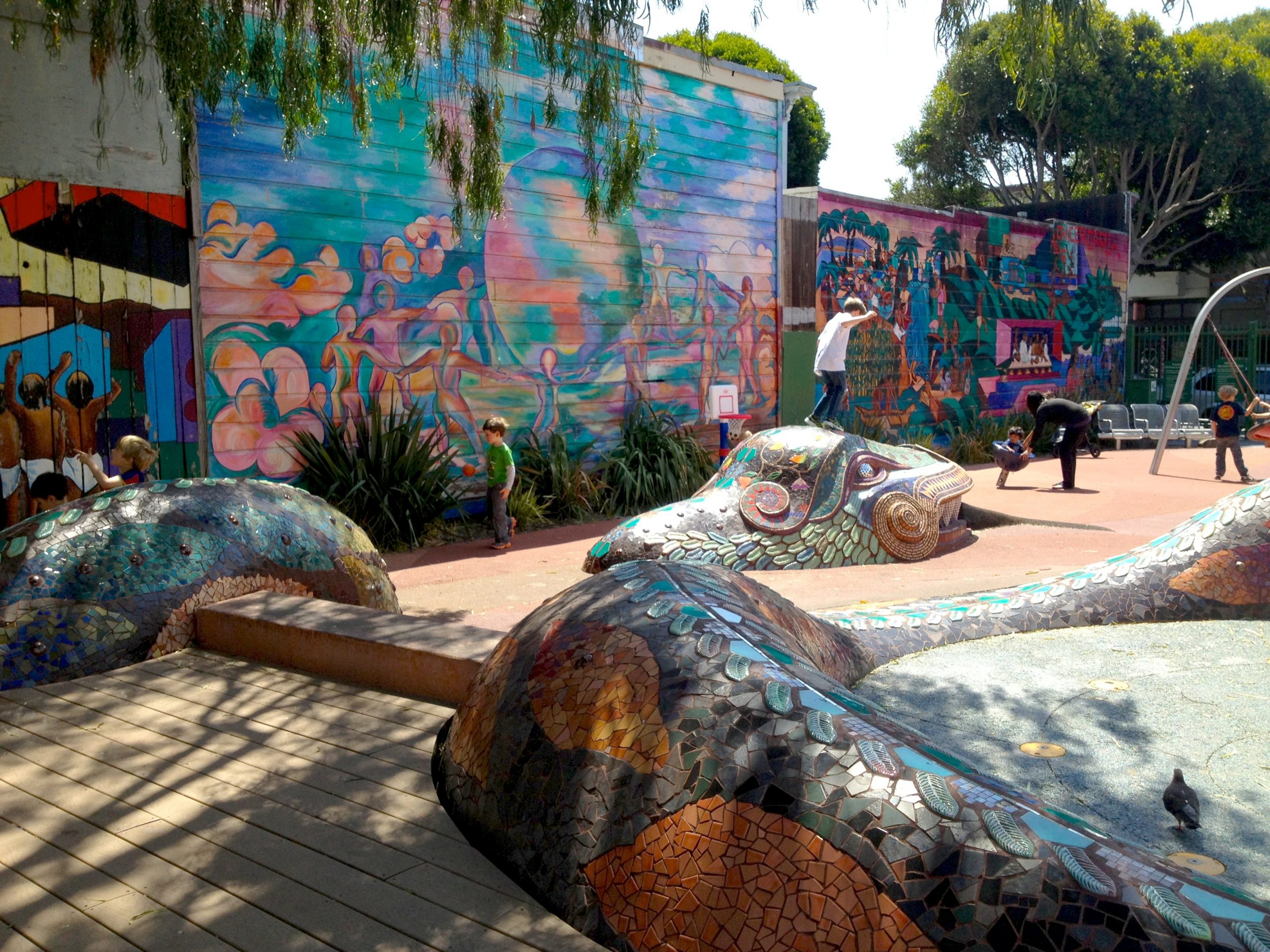Celebrating placemaking: The role of arts and culture in community development
December 14, 2016

Placemaking, wielded skillfully, is a powerful tool to preserve, respect, lift up, and celebrate the culture of a community in ways that go far beyond aesthetics. Giving placemaking and, within that, arts and culture, a seat at the table when community development decisions are made can help to support more equitable outcomes.
This can be especially critical in neighborhoods grappling with significant vacancy and abandonment challenges, where residents remain deeply committed to strengthening their community and understandably wary of interventions that may disrupt the community fabric or eventually displace neighbors.
Principles of placemaking can provide a critical gut check for community development practitioners, prompting deeper exploration of questions such as: “Who is really being served by this plan?” “Whose culture is reflected and respected in this revitalization project?” “Who will actually use this space and how?”

24th Street Mini Park in the Mission District (Credit: Colleen Proppe)
Within placemaking, art is one means of creating a sense of place – and can also be a means of drawing attention to social challenges in a community; ultimately, one hopes, attracting resources and interventions that support equitable revitalization.
Often, however, the arts are seen as a luxury, or an add-on, to a project, rather than a necessary component of creating an inclusive community.
Similarly, placemaking is rarely seen as an integral part of the overall processes and systems that shape revitalization plans, whether at the lot, block, neighborhood, or city levels. When placemaking isn’t integrated into the planning process in a meaningful and genuine way, decisions may be made that don’t actually reflect the culture, priorities, or needs of community residents.
On November 10-11, 2016, a cross-sector group of policy-makers, community development professionals, artists, and philanthropic leaders from Detroit, Flint, Minneapolis, and St. Paul gathered in Albany, New York, to explore how multi-stakeholder partnerships can leverage creative placemaking to support community development outcomes.
In this learning exchange, convened by Center for Community Progress and supported through grants from the National Endowment for the Arts and The Kresge Foundation, participants learned about Breathing Lights a public art project that installed light panels in the windows of hundreds of vacant properties across Albany, Schenectady, and Troy, which glow brightly and then dim in an undulating pattern that mimics human breathing. Presentations on Breathing Lights served as the jumping off point for discussions about how to build stronger bridges between arts and placemaking, and community development and policy decisions.
We explored the ways to break down policy barriers that all too often snuff out creative projects before they happen. Our robust and provocative conversations sparked ideas about how municipal leaders working with the arts, culture, and placemaking community can engage residents to partner on neighborhood revitalization projects. Setting a place at the table for the arts, culture and placemaking community helps build on and lift up the culture of a community, stimulate economic investment, and ensure social equity and cultural identity remain at the forefront of revitalization efforts.
Some of the key takeaways from the exchange include:
- Art is a vehicle to draw attention to critical social issues, but art alone is not the solution.
- Strong Mayoral leadership that supports, embraces and provides a seat at the community development table to the arts and culture community is a critical element to meaningful citizen engagement. In the absence of Mayoral support, arts leaders should cultivate support from other municipal leaders who can help push for the arts and culture community’s seat at the table.
- Ensure the arts and placemaking community have access to the tools needed for public art projects by forming strong partnerships between municipal leaders and the arts community to identify and break down policy barriers that often prevent placemaking projects such as land acquisition policies, zoning restrictions, and permitting challenges.
- Philanthropy has a role to play in making meaningful community engagement possible. For example, quick-turnaround Requests for Proposals (RFP) leave little time to bring residents to the table as part of the project planning process. The RFP response process should allow for adequate time to ensure neighborhood residents have a voice in the planning of community development and arts-based projects. Relationships of trust take time to establish.
- Words matter. Funders and government leaders should find ways to encourage more grassroots citizen participation and engage a broader segment of the arts and community development sectors by reducing reliance on technical terms (RFP, RFQ, LOI) and embracing plain language descriptions of funding opportunities, project requirements, and deadlines.
- Placemaking projects are positioned to genuinely prioritize social justice and racial equity in neighborhoods. A successful community development project is one that embraces the culture, history, and needs of the residents while ideas are being developed, before the project’s planning phase, and throughout planning and implementation of the project. Community development practitioners could benefit greatly from more intentional partnerships with placemaking experts at every stage of the process.
Our learning exchange was an exciting opportunity to bring cross-sector, likeminded thinkers together to celebrate placemaking and honor the role that arts and culture projects play in community development. But we only scratched the surface. There’s a lot of work yet to be done to build bridges between policy makers and the placemaking world, but if we truly value equity in community development, that work must be done. We look forward to continuing to move this conversation.
“The arts are not a frill. The arts are a response to our individuality and our nature, and help to shape our identity. What is there that can transcend deep difference and stubborn divisions? The arts. They have a wonderful universality. Art has the potential to unify. It can speak in many languages without a translator. The arts do not discriminate. The arts can lift us up.” – Former Texas Congresswoman Barbara Jordan
Get the latest tools, resources, and educational opportunities to help you end systemic vacancy, delivered to your inbox.
